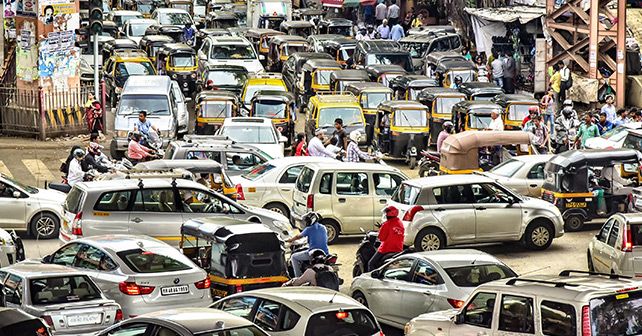
We tend to engage with inanimate vehicles on the road instead of the humans in them. Which is perhaps why we are inconsiderate drivers, says Srini.
I’m going to tell you about a slightly embarrassing incident. One day, I was driving along at a moderate speed when a C-Class cut into my lane, causing me to brake sharply. That C-Class was going at a higher speed, but all he needed was a bit of patience to wait for a gap to open up instead of cutting in front. Now, I’m not usually provoked. But this was blatantly irresponsible and inconsiderate driving by someone in an expensive car who thinks everyone else ought to make way for him because he’s in a hurry.
Incensed, I downshifted and stepped on the pedal to catch up with this perpetrator. The Mercedes-Benz driver sensed he had rubbed me up the wrong way, and so we started a cat-and-mouse game on public roads. He fleeing, me seeking revenge. As it happens on Mumbai roads, you cannot escape. So I caught up with him, ready to launch a verbal assault.
Instead, I blurted out in the nick of time, ‘Man, I’ve been trying to catch up with you to say hello… How are you doing? Where are you off to? Somewhere in a rush?’ The Mercedes driver turned out to be someone whom I knew. He would have obviously been relieved to see a familiar face; as for me, I think I salvaged the situation by pretending to chase him to greet him. What could have been a classic road rage situation inadvertently turned out to be a friendly encounter between two acquaintances. I realised later that my behaviour was influenced by an aggressive, snobby C-Class, but it changed when I realised there was a decent chap behind the wheel, who also owned a classic car.
Very often, we attribute personalities to the vehicle being driven without seeing who’s in it. These preconceived notions can sometimes make us do unpleasant things that could lead to road rage. We don’t look at the human behind the wheel, but at that vehicle which is behaving like an oaf. While it doesn’t absolve anyone from aggressive or dangerous driving, our behaviour could change if we take a closer look at the human inside. Is that a badly driven Duster or a stressed-out executive on his way back home? Is the Dzire blocking your way or an exhausted cab driver who is yet to earn his daily wages? Is it an indecisive City or a harried mother on her way to school? Is it a jerky WagonR or an anxious relative heading to the hospital?
I spoke to Biju Dominic, a deeply perceptive man who’s the co-founder and CEO of a behaviour architecture firm called Final Mile. His day job is to peer into human minds and figure out why people behave the way they do. For example, one of his behavioural intervention solutions continues to save the lives of people who endanger themselves by crisscrossing Mumbai’s busy railway tracks. ‘Context is one of the most important factors when it comes to behaviour. To understand one’s behaviour, it’s important to evaluate the context.’ He cites examples of how we tend to assume that the smaller vehicle is the innocent one in a collision with a larger one. Or the perception that drivers in red cars tend to take more chances behind the wheel than other body colours. ‘It’s true that cars tend to take on personalities,’ he says.
While driving, perhaps we are not bothered about things like context, when there are a million cars standing between us and our destination. But it’s important to remember that others also feel the same way – you are also in one of a million other cars coming in the way of his or her destination. With a bit of empathy, our roads could be far better places.
In the best-seller 7 Habits Of Highly Effective People, there’s the story of a man in a subway train who’s seemingly unconcerned about the noise his children were making and disturbing others. It’s only when one fellow passenger angrily points this out to him does he wake up from his stupor. It’s only later that everyone realises that the father and his children were returning from the mother’s funeral.
When we understand the context, our behaviour can change. It helps us empathise and makes us courteous, considerate and safer drivers. Yes, it’s tough. But not impossible.
Srinivas Krishnan writes about classic and vintage cars for various publications. He is the former Editor of Business Standard Motoring & former Head of Press, Porsche India.
Read more:
Why aren't American car brands successful in India?
The adverse effects of states & politicians going back on the new MVA























Write your Comment